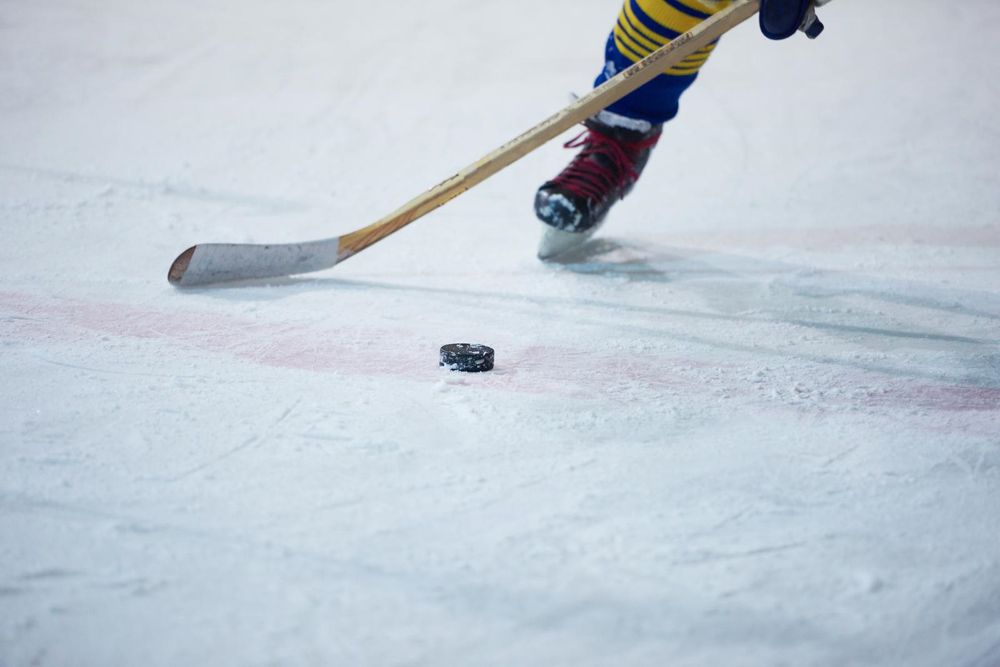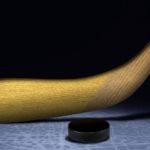In the world of hockey, finding the perfect blade curve for your stick can be the key to unlocking your full potential on the ice. Whether you’re a seasoned player or just starting out, understanding the different types of blade curves and their impact on your performance is crucial. The right blade curve can enhance your puck handling, increase shooting accuracy, and improve overall control.
But how do you choose the best blade curve for you? It may require some trial and error, but considering your playing style and personal ability will guide your decision.
In this guide, we will delve into the world of blade curves, exploring the types, depths, and effects on your game. So, let’s embark on this journey and unlock your hockey potential with the perfect blade curve.
Types of Blade Curves
Heel, toe, and mid curves are the three main types of blade curves used in hockey sticks. Each curve offers unique advantages for different types of shots.
Blade curve customization plays a crucial role in a player’s ability to perform various techniques on the ice. By understanding the advantages of each curve, players can choose the blade curve that best suits their needs and maximize their performance on the ice.
Heel curves are designed to improve power for slapshots and backhand shots. This curve allows players to generate more force behind their shots, making it ideal for players who rely on powerful shots.
Toe curves, on the other hand, allow for shooting from confined spaces and easier puck lifting. This curve is beneficial for players who need to shoot in tight spaces or want to lift the puck quickly and easily.
Mid curves provide a balance between heel and toe curves. This curve increases accuracy on all types of shots, making it suitable for players who prioritize accuracy over power or puck control.
The benefits of different blade curves depend on the player’s style of play and personal ability. Some players may prefer the power of a heel curve, while others may prioritize the versatility of a mid curve or the agility of a toe curve.
Breaking Down Blade Curve Depth
Blade curve depth plays a significant role in determining a player’s level of puck control and shooting ability. The depth of the curve refers to how pronounced the curve is from the heel to the toe of the blade. Understanding the impact of blade curve depth is crucial in selecting the right curve for your playing style.
Using a shallow blade curve offers several advantages. It provides better accuracy and overall puck control, allowing players to make precise passes and stickhandle with ease. However, a shallow curve makes it more challenging to lift the puck, limiting the player’s ability to execute shots that require elevation.
Blade curve depth also affects shooting accuracy. A deeper curve generates more puck spin, enhancing shooting accuracy by providing greater control and stability to the shot. On the other hand, a shallow curve may sacrifice some accuracy, but it allows for quicker release and increased shot velocity.
When choosing the best blade curve, it is essential to consider your personal preferences, playing style, and ability. Trial and error may be necessary to find the curve that works best for you.
Ultimately, the right blade curve depth can enhance your puck control and shooting ability, unlocking your hockey potential.
How Blade Curve Affects Puck Handling
The depth of the blade curve significantly influences a player’s ability to handle the puck effectively, continuing to impact their overall performance on the ice.
The blade curve not only improves puck control but also plays a crucial role in shooting accuracy. A deeper curve generates more puck spin, resulting in enhanced shooting accuracy. Additionally, a deeper curve improves puck control when grabbing the puck and adds power and speed to shots.
However, it’s important to note that personal preference also plays a role in choosing the best blade curve. Players should consider their playing style and personal ability when selecting a curve. It may take some trial and error to find the curve that works best for each individual player.
Choosing the Best Blade Curve
When deciding on the most suitable blade curve, players should carefully consider their playing style and personal ability, as this will greatly impact their overall performance on the ice. Exploring different blade curve options is essential to finding the perfect match. Evaluating the impact of blade curve on shooting accuracy is crucial for players looking to improve their game.
Here are three key factors to consider when choosing the best blade curve:
- Heel curves: These curves are ideal for players who rely on powerful slapshots and backhand shots to score goals. They provide excellent power and stability, allowing for hard and accurate shots.
- Toe curves: For players who need to shoot from confined spaces or want an easier time lifting the puck, toe curves are the way to go. They offer excellent maneuverability and puck control.
- Mid curves: These curves strike a balance between heel and toe curves, making them versatile options. They enhance accuracy on all types of shots and provide good puck control.
Additional Hockey Content
To further expand your knowledge of the game, explore additional hockey content that delves into positions, equipment, NHL facts, and the rules of the sport.
Understanding the different positions in hockey, such as forward, defenseman, goaltender, center, and wing, will give you insight into the specific roles and responsibilities each player fulfills on the ice.
Exploring the intricacies of hockey equipment, including the importance of a properly fitted helmet, shoulder pads, elbow pads, shin guards, and skates, will help you understand how these items contribute to your performance and safety.
Learning about the National Hockey League (NHL) facts, such as its establishment in 1917, the 32 teams from the United States and Canada, the prestigious Stanley Cup, Winter Olympics representation, and revenue sources, will deepen your appreciation for the sport’s history and significance.
Lastly, familiarizing yourself with the rules of hockey, such as offside, icing, penalty box, power play, and shootout, will ensure you have a comprehensive understanding of the game’s regulations and dynamics.
Additionally, exploring topics such as hockey stick flexibility and the importance of stick length will provide valuable insights into how these factors impact your performance on the ice.
Frequently Asked Questions
What Is the Best Blade Curve for Beginners?
The best blade curve for beginners is a mid curve, as it offers a balance between power and accuracy. It allows for improved shooting and puck control, making it easier for beginners to develop their skills on the ice.
Can I Change the Blade Curve on My Hockey Stick?
Yes, it is possible to adjust the blade curve on your hockey stick. Custom blade curves offer benefits such as improved puck control, shooting accuracy, and personalization to suit your playing style and ability.
How Often Should I Replace My Hockey Stick Blade?
Proper maintenance of hockey stick blades is crucial to ensure optimal performance. To preserve the lifespan of the blade, it is recommended to replace it when signs of wear and tear, such as cracks or significant loss of curve, become evident.
Does the Blade Curve Affect Stickhandling Ability?
Yes, the blade curve significantly affects stickhandling ability. A proper grip is crucial for control. Techniques such as quick hands, proper body positioning, and practicing with different blade curves can improve speed and accuracy.
Are There Any Disadvantages to Using a Deep Curve Blade?
Deep curve blades offer excellent control and power, but they can make it difficult to execute backhand shots. However, this disadvantage can be mitigated with proper technique and practice.
Conclusion
In conclusion, selecting the right blade curve is essential for unlocking your full potential in hockey.
The various types of blade curves, such as heel, toe, and mid curves, each offer unique advantages for specific types of shots.
Additionally, the depth of the blade curve affects puck control and the ability to lift the puck.
By considering your playing style and personal ability, you can find the perfect blade curve to enhance your puck handling, shooting accuracy, and overall control on the ice.
So, dive into the world of blade curves and elevate your hockey game to new heights.









